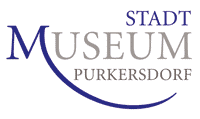City Museum

H O M E
Purkersdorf 1967-2007 in Bildern
Stichwort Purkersdorf 2003
Festschrift 50 Jahre Stadt Purkersdorf
Allgemeines
Hildegard JONE Symposium 2013
Hildegard Jone Symposium TagungsbandHildegard JONE Symposium 2013 ProgrammHildegard JONE Symposium 2013 FotosDer Humplik-Jone RaumHildegard JONE Symposium 2013 

Postkutsche
Museumsnachmittag 2024Museumsnachmittag 2023Museumsnachmittag 2021Museumsnachmittag 2017  Poststation in Purkersdorf, ORF NÖ mit Alfred Komarek
Poststation in Purkersdorf, ORF NÖ mit Alfred Komarek  Museumsnachmittag 2017Museumsnachmittag 2016Postkutsche: Service 2016Museumsnachmittag 2015N1TV - NÖ Regionalfernsehen, Museumsnachmittag
Museumsnachmittag 2017Museumsnachmittag 2016Postkutsche: Service 2016Museumsnachmittag 2015N1TV - NÖ Regionalfernsehen, Museumsnachmittag  Postbotenfahrt 21. September 2013Museumsnachmittag 2012
Postbotenfahrt 21. September 2013Museumsnachmittag 2012  Museumsnachmittag 2012
Museumsnachmittag 2012  Museumsnachmittag 2012 BilderMuseumsnachmittag 2011Postkutsche erste Ausfahrt 2009
Museumsnachmittag 2012 BilderMuseumsnachmittag 2011Postkutsche erste Ausfahrt 2009
 Poststation in Purkersdorf, ORF NÖ mit Alfred Komarek
Poststation in Purkersdorf, ORF NÖ mit Alfred Komarek  Museumsnachmittag 2017Museumsnachmittag 2016Postkutsche: Service 2016Museumsnachmittag 2015N1TV - NÖ Regionalfernsehen, Museumsnachmittag
Museumsnachmittag 2017Museumsnachmittag 2016Postkutsche: Service 2016Museumsnachmittag 2015N1TV - NÖ Regionalfernsehen, Museumsnachmittag  Postbotenfahrt 21. September 2013Museumsnachmittag 2012
Postbotenfahrt 21. September 2013Museumsnachmittag 2012  Museumsnachmittag 2012
Museumsnachmittag 2012  Museumsnachmittag 2012 BilderMuseumsnachmittag 2011Postkutsche erste Ausfahrt 2009
Museumsnachmittag 2012 BilderMuseumsnachmittag 2011Postkutsche erste Ausfahrt 200940 Jahre Stadterhebung
Berichte aus dem Stadtmuseum
Der Wienfluss70 Jahre selbstständige Gemeinde 1954150 Jahre VerschönerungsvereinSanatorium Purkersdorf200 Jahre Aussicht vom TroppbergDas Zeitalter Maria TheresiasAusstellung Purkersdorf 1914-1918Ausstellung Fernsehkoch Franz RuhmAusstellung Purkersdorf 1945Eröffnung der Sakralen SammlungBilder von Hildegard Jone  Bilder GedenkstättenBilder StadtmuseumNeues im Stadtmuseum
Bilder GedenkstättenBilder StadtmuseumNeues im Stadtmuseum
 Bilder GedenkstättenBilder StadtmuseumNeues im Stadtmuseum
Bilder GedenkstättenBilder StadtmuseumNeues im StadtmuseumEhrenkustos Johann Wohlmuth 1924 - 2007
Forschungen aus dem Stadtmuseum
Die Shoah in PurkersdorfDer Februar 1934 in PurkersdorfDie Gedenk- und ErinnerungslandschaftWie alt ist der WienerwaldDie dreißiger Jahre in PurkersdorfDie Ersten 100 Jahre im GemeinderatHitler war kein EhrenbürgerDas Hotelensemble Wienerstraße 12Wildgansweg am SagbergHolocaust GedenksteinPurkersdorf und die WestbahnDer SängerbrunnenEine Eisenbahn durch den Wienerwald
Hintergrundinfo
Mozartfest 5. Mai 2018  100 Jahre Volksbank in PurkersdorfTroppbergwarteFriedhof PurkersdorfEhrengrab Friedrich SchlöglDie Trennung von NÖ und Wien 1920Mozart im japanischen FernsehenMozart GedenkstätteMozart in PurkersdorfWeinheberdenkmalGedichte von Anton WildgansAnton Wildgans WegErinnerungskultur in PurkersdorfDie PostkutscheDas Stadtmuseum – ein Beitrag zur PurkerProf. Horst AschermannGedenkstätten in PurkersdorfDie FeihlerhöheHildegard Jone und die internationale Webernrezeption
100 Jahre Volksbank in PurkersdorfTroppbergwarteFriedhof PurkersdorfEhrengrab Friedrich SchlöglDie Trennung von NÖ und Wien 1920Mozart im japanischen FernsehenMozart GedenkstätteMozart in PurkersdorfWeinheberdenkmalGedichte von Anton WildgansAnton Wildgans WegErinnerungskultur in PurkersdorfDie PostkutscheDas Stadtmuseum – ein Beitrag zur PurkerProf. Horst AschermannGedenkstätten in PurkersdorfDie FeihlerhöheHildegard Jone und die internationale Webernrezeption
 100 Jahre Volksbank in PurkersdorfTroppbergwarteFriedhof PurkersdorfEhrengrab Friedrich SchlöglDie Trennung von NÖ und Wien 1920Mozart im japanischen FernsehenMozart GedenkstätteMozart in PurkersdorfWeinheberdenkmalGedichte von Anton WildgansAnton Wildgans WegErinnerungskultur in PurkersdorfDie PostkutscheDas Stadtmuseum – ein Beitrag zur PurkerProf. Horst AschermannGedenkstätten in PurkersdorfDie FeihlerhöheHildegard Jone und die internationale Webernrezeption
100 Jahre Volksbank in PurkersdorfTroppbergwarteFriedhof PurkersdorfEhrengrab Friedrich SchlöglDie Trennung von NÖ und Wien 1920Mozart im japanischen FernsehenMozart GedenkstätteMozart in PurkersdorfWeinheberdenkmalGedichte von Anton WildgansAnton Wildgans WegErinnerungskultur in PurkersdorfDie PostkutscheDas Stadtmuseum – ein Beitrag zur PurkerProf. Horst AschermannGedenkstätten in PurkersdorfDie FeihlerhöheHildegard Jone und die internationale WebernrezeptionEnglish
City Museum
"Stadtmuseum Purkersdorf" - "City Museum of Purkersdorf"
Christian Matzka
Ulrike Matzka
On October 26th 2006 the City Museum of Purkersdorf was opened to the public.
Founded in 1967 the museum has been located in the castle of Purkersdorf since 1986. After twenty years it had become necessary to renovate it.
The history of the museum itself, the life and works of the painter and sculpturer Horst Aschermann, comparative pictures of other villages called Purkersdorf/Burkersdorf in Austria, Germany and Poland and photographs and pictures of Purkersdorf in the last forty years are the themes of the first room which is also the entrance to the museum.
The second room is dedicated to the artist couple Josef Humplik and Hildegard Jone, who married in 1921. Humplik studied in Vienna and was the private teacher of Hildegard Jone.
They lived in Purkersdorf from 1934 until their deaths in 1958 and 1963. Hildegard Jone died in 1963 in the Sanatorium Purkersdorf, which was built by Josef Hoffmann.
The sculptures, especially the portraits of some famous Austrian artists and politicians, are well known.
In this room, Humplik\\'s sculptures of Josef Humplik, Hildegard Jone, Anton Webern. Ferdinand Ebner, Carl Moll and Georg Merkel are shown.
Hildegard Jone was also a poet. Her poems were used by Anton Webern for his compositions. All vocal works of Webern composed after 1933 are based on poems of Hildegard Jone.
She was a member of the International Webern Society in Seattle where the first international Webern Festival took place in 1962.
The exhibition focuses on the publications, the books and poems, unpublished works of Hildegard Jone, her paintings and the reception of Webern on an international level.
Visitors are invited to listen to the compositions opus 23 and opus 25 as examples of Jone\\'s and Webern\\'s artistic creativity.
The third room of the museum contains an exhibition showing the history of Purkersdorf.
The beginning of the small village in the Middle Ages along the postal route from Vienna to Germany and the growth of Purkersdorf after the building of the railway in 1858, the development of the council and the administration are the main topics.
Many famous people travelled through Purkersdorf from and to Vienna, including W. A. Mozart, Casanova, the pope Pius VI. and Napoleon I.
In 1529 and 1683 the Turkish army destroyed Purkersdorf. The French army was in Purkersdorf in 1805 and 1809.
Hitler and the Wehrmacht used the main road through Purkersdorf in March 1938, and in 1945 the Red Army started their attack against Vienna from the west. From April 5th to 7th, 1945, Purkersdorf became the front between the Soviets and the Germans.
One hundred years ago Purkersdorf was an important summer resort for the Viennese.
New houses were built and during the last century former farmland was converted into residential areas.
Eighty percent of the community\'s area are woods. Only a small part can be used for settlement.
The former cinema which was closed in 1969 is represented by the last programme and the old film machine (projector).
